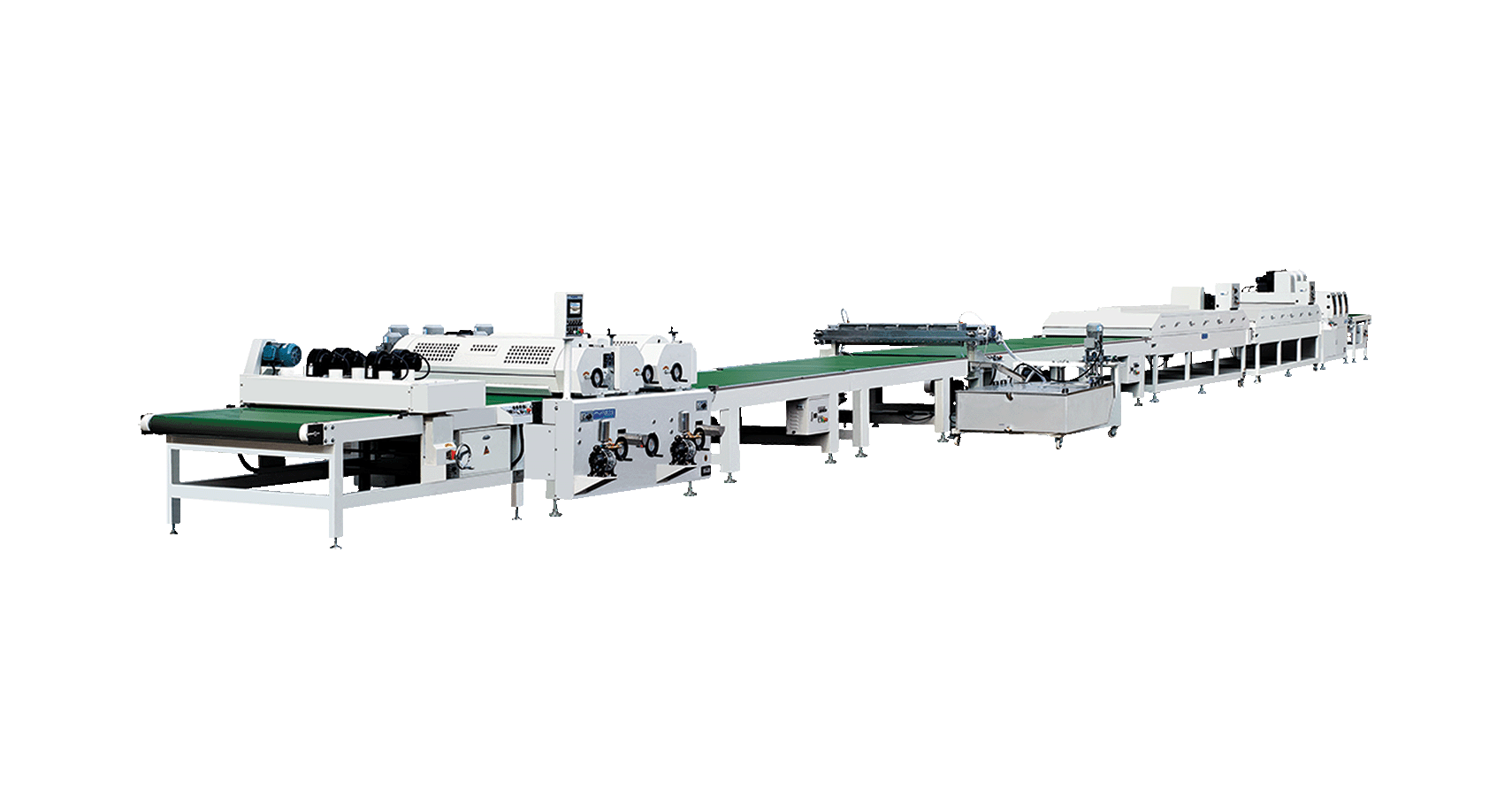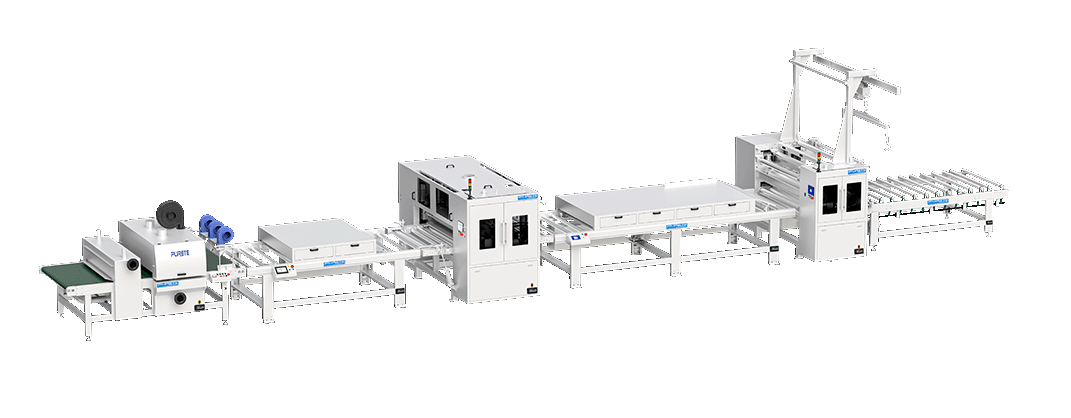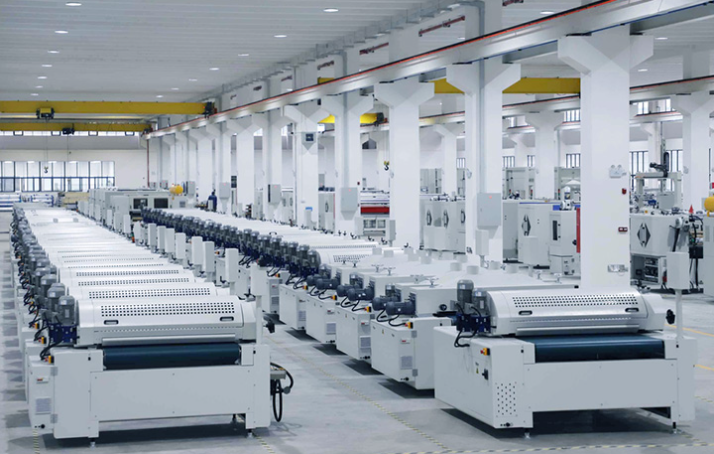Unlocking the Potential of Curtain Coating Machines in Manufacturing
 February 10, 2025
February 10, 2025 Hits:1243second
Hits:1243secondCurtain coating machines are highly specialized industrial equipment used for the application of liquid coatings onto flat surfaces. These machines work by creating a continuous "curtain" of liquid that flows over a substrate as it moves through the machine. This innovative coating method is valued for its ability to provide uniform coverage with high precision, making it a preferred choice for industries such as furniture manufacturing, automotive, electronics, and paper processing.
How Does a Curtain Coating Machine Work?
The basic operation of a curtain coating machine involves several critical components:
Coating Head: The coating liquid is pumped into the coating head, which distributes it evenly across the width of the machine. The coating liquid then flows downward in a curtain-like manner.
Conveyor System: The substrate to be coated (e.g., wood panels, glass sheets, or metal plates) is placed on a conveyor that moves it at a controlled speed under the liquid curtain.
Liquid Curtain: The liquid forms a continuous, uniform curtain, ensuring consistent thickness across the surface.
Drying System: Once coated, the substrate moves to a drying section where the liquid coating is cured or dried, depending on the material and coating type.
Control System: Advanced curtain coating machines are equipped with digital controls that allow precise adjustments to parameters such as coating thickness, flow rate, and conveyor speed.
Advantages of Curtain Coating Machines
Curtain coating machines offer several significant benefits that make them indispensable for certain applications:
Uniform Coating: The liquid curtain ensures that the coating is applied evenly, even on substrates with slight surface variations.
High Efficiency: These machines can process large quantities of materials quickly, reducing production time and labor costs.
Customizable Coating Thickness: By adjusting the flow rate and conveyor speed, manufacturers can achieve the desired coating thickness with high precision.
Minimal Waste: Excess coating liquid can be collected and reused, reducing material wastage and improving cost-efficiency.
Versatility: Curtain coating machines can handle a wide range of coatings, including paints, varnishes, adhesives, and specialty chemicals.
Environmental Benefits: The closed system design reduces emissions and contamination, making the process environmentally friendly.
Applications of Curtain Coating Machines
Curtain coating machines are used across various industries for different purposes:
Furniture Industry: Used to apply lacquer, varnish, or paint to wooden panels, ensuring a smooth and durable finish.
Automotive Sector: Helps in coating automotive parts, such as dashboards and door panels, with protective or decorative finishes.
Electronics: Applied in the production of circuit boards and electronic displays to provide protective coatings.
Packaging Industry: Used to coat paper, cardboard, or plastic for enhanced durability, water resistance, or decorative effects.
Construction Materials: Coating glass, metal sheets, or composite panels for building facades and interior designs.
Key Features of Modern Curtain Coating Machines
Modern curtain coating machines incorporate advanced technologies to improve performance and adaptability:
Precision Control Systems: Digital interfaces and sensors for real-time monitoring and adjustments.
Modular Design: Allows for easy customization and integration into existing production lines.
High-Speed Operation: Capable of processing substrates at speeds of up to several hundred meters per minute.
Eco-Friendly Design: Equipped with solvent recovery systems and low-emission technologies.
Multi-Layer Coating Capability: Some machines can apply multiple layers in a single pass, reducing the need for additional processing steps.
Challenges and Limitations
Despite their many advantages, curtain coating machines also come with certain challenges:
High Initial Investment: The cost of purchasing and installing a curtain coating machine can be significant.
Material Limitations: Not all substrates are suitable for curtain coating, especially those with highly irregular surfaces.
Maintenance Requirements: Regular cleaning and maintenance are necessary to prevent clogs and ensure consistent performance.
Operator Expertise: Skilled operators are required to manage and troubleshoot the machine effectively.
Trends in Curtain Coating Technology
The curtain coating industry is evolving with advancements in technology and changing market demands. Some notable trends include:
Automation: Increasing adoption of AI and machine learning for predictive maintenance and process optimization.
Sustainability: Development of eco-friendly coatings and systems that reduce energy consumption and waste.
Integration with Industry 4.0: Enhanced connectivity and data analytics for smarter production workflows.
Custom Solutions: Growing demand for machines tailored to specific applications and materials.
Curtain coating machines are a cornerstone of modern manufacturing, providing unparalleled precision and efficiency in applying liquid coatings. As technology continues to advance, these machines are becoming more versatile, eco-friendly, and user-friendly, solidifying their role in a wide range of industries. Whether for furniture, automotive, electronics, or construction materials, curtain coating machines offer a reliable solution for achieving high-quality finishes with minimal waste.














